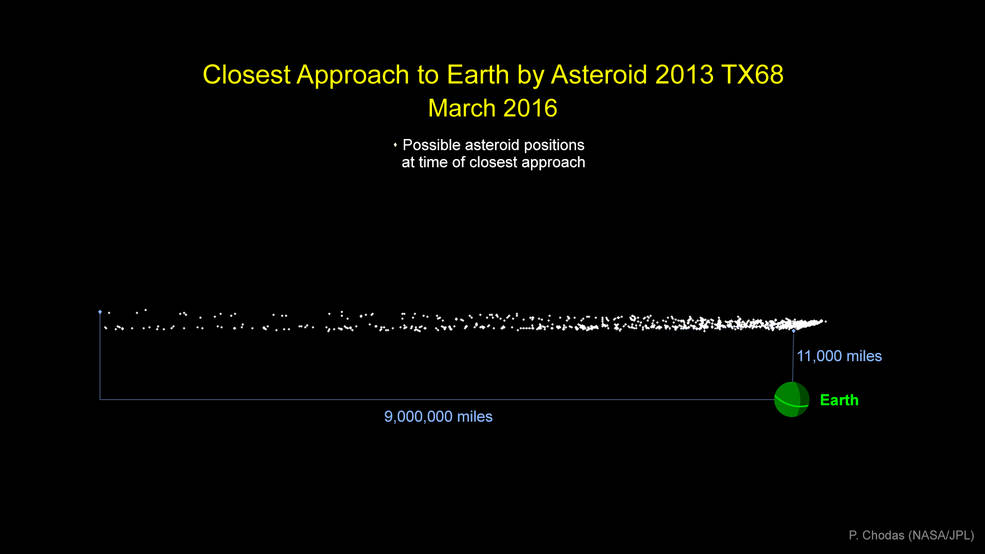NASA has announced that a 30-metre wide asteroid passing Earth on March 5 might come so close that it'll be visible in our sky.
Before you freak out, there's no chance that the asteroid is going to smash into us. The space agency is still determining its exact trajectory, but at the closest estimate, it'll be 18,000 km (11,000 miles) away as it passes us by - which would make it easily viewable with the help of a telescope. To put that into perspective, that's roughly one-twentieth the distance from Earth to the Moon.
Alternatively, the asteroid could travel further afield, and pass us at a distance of around 14 million km (9 million miles).
The reason for the big difference in these two estimates is that NASA only discovered this asteroid three years ago - hence the very-catchy name, asteroid 2013 TX68 - and haven't had much time to observe it just yet. When it was first spotted, it was approaching Earth on the night-time side of the planet, but after three days of tracking, the asteroid moved into the day-time sky so it could no longer be monitored.
In that short period of time, scientists have been able to roughly map its possible trajectories, but there's a slight margin of error, which is why we're not exactly sure whether it'll be passing us with an incredibly wide berth, or coming close enough for us to get a glimpse of it.
"This asteroid's orbit is quite uncertain, and it will be hard to predict where to look for it," said Paul Chodas, the manager of NASA's Centre for Near Earth Object Studies. "There is a chance that the asteroid will be picked up by our asteroid search telescopes when it safely flies past us next month, providing us with data to more precisely define its orbit around the Sun."
You can see the two projected (and both very safe) paths the asteroid could take below:

Given our current understanding of the asteroid's possible trajectories, there is a very small (less than 1-in-250 million) chance that the asteroid could impact Earth in 2017 on one of its later flybys, but NASA isn't too worried just yet.
"The possibilities of collision on any of the three future flyby dates are far too small to be of any real concern," said Chodas. "I fully expect any future observations to reduce the probability even more."
What would happen if a steroid 2013 TX68 did hit us? Well, it's around twice the size of the asteroid that broke up in the atmosphere over Chelyabinsk, Russia, three years ago, releasing a shock wave that broke windows and damaged buildings, injuring around 1,500 people.
If asteroid 2013 TX68 did hit Earth's atmosphere, NASA predicts it would produce an air burst about twice the energy of the Chelyabinsk event.
We'll keep you updated on how the asteroid is tracking, so watch this space. But in the meantime, get your telescopes ready to watch the skies on March 5, because it's not every day we have the chance to wave at an asteroid safely passing us by.
